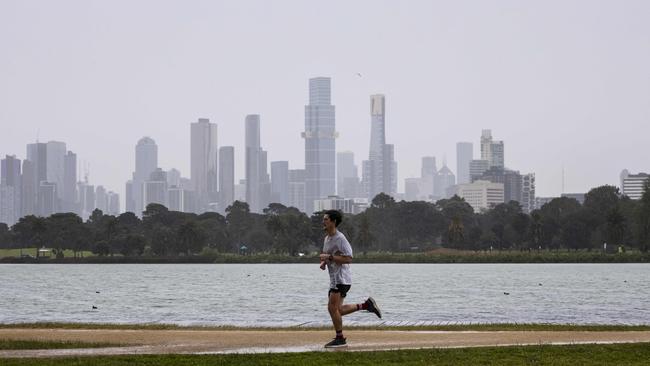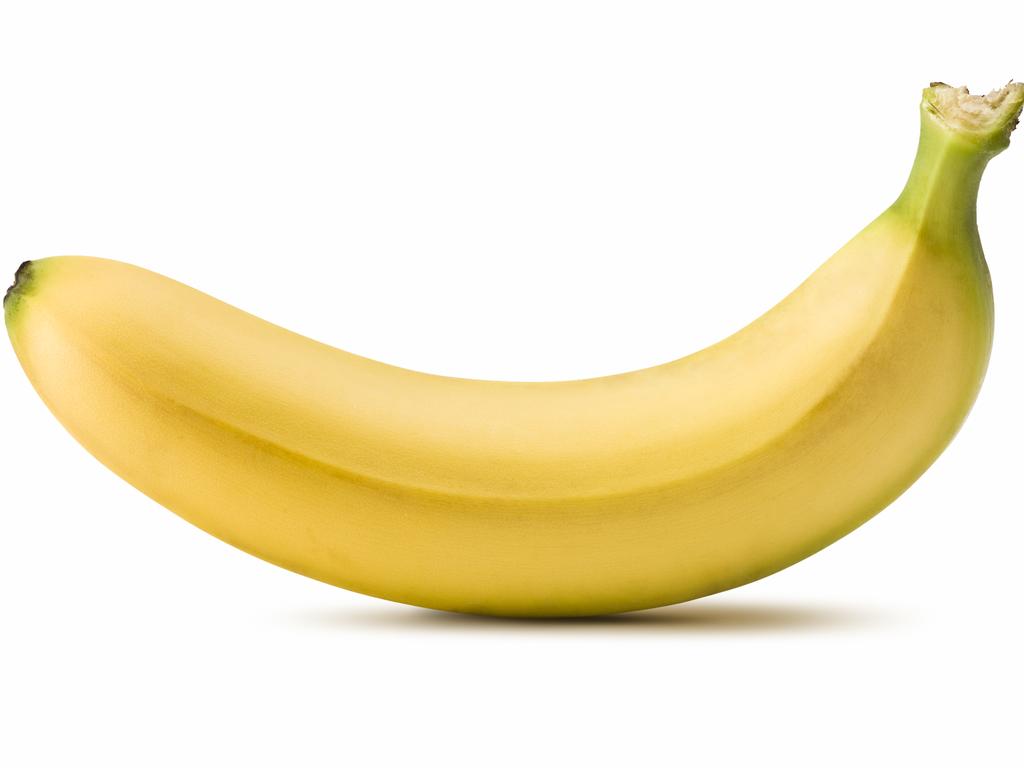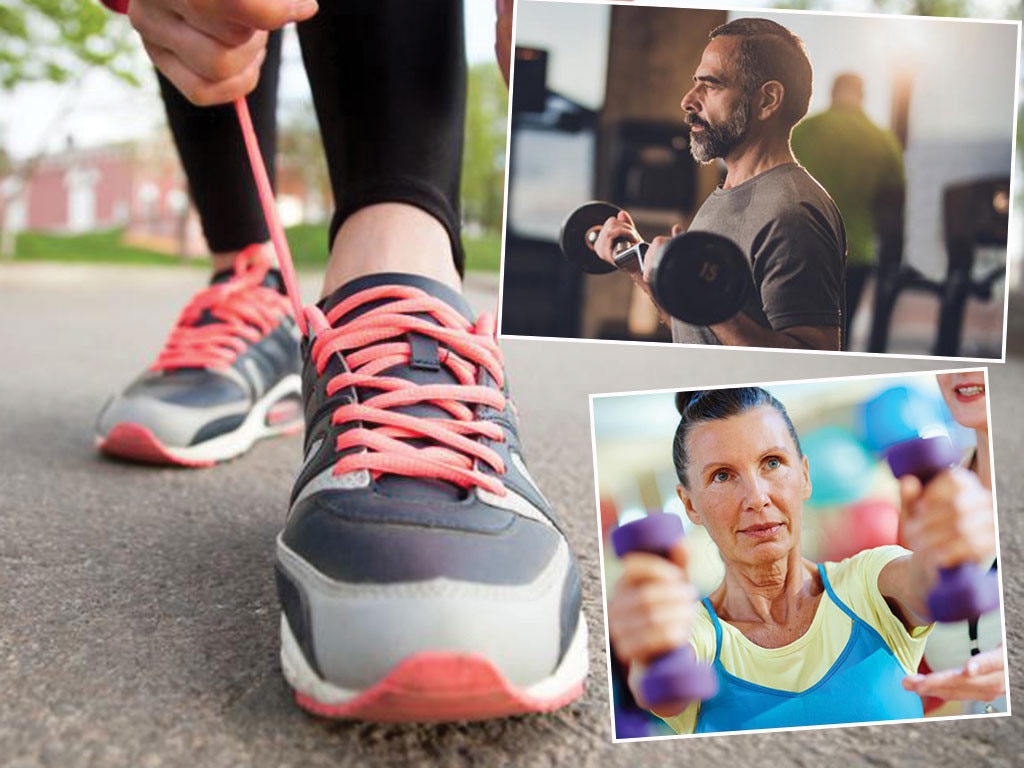Health and fitness: How to lose 10kg in 20 weeks — a man’s guide
The way to lose weight so it stays off is not to rush, say the experts

If you are a middle-aged man seeking weight-loss inspiration, look no further than Will Smith. The Hollywood actor gained so much weight during Covid-19 – he weighed in at just over 100kg and, as he put it himself on social media, was in “the worst shape of my life” by last May.
Determined to do something about it, he set himself the challenge of losing 20 pounds (9.07kg) in 20 weeks — not a crash diet, but a steady plan that requires commitment and determination. Smith’s YouTube documentary series on the process lands next week. It’s called The Best Shape of My Life,which he says he is now in at the age of 53.

Smith’s sensible approach may not have the initial appeal of more extreme programs that promise fast fat-blasting, but experts believe that people are more likely to stick to less restrictive regimens. A longer-term plan is certainly more effective when it comes to keeping weight off.
“Carefully controlled, rapid weight loss is useful for very overweight or obese people who need to change their metabolism for medical reasons such as type 2 diabetes,” says Dr Duane Mellor, a dietitian and senior teaching fellow at Aston Medical School in Birmingham, England. “But for people who are moderately overweight, a sustained weight loss is more sensible and less likely to produce a kickback of pounds regained down the line.”
This was demonstrated in a study of 183 dieters published in the journal Obesity when researchers at Drexel University in Philadelphia found that shedding weight at a consistent rate each week resulted in better long-term weight loss two to three years later than losing a lot in the first few weeks.
“Developing stable, repeatable behaviours related to food intake and weight loss early on in a weight-control program is really important for maintaining changes over the long term,” says the psychologist Emily Feig, who was the lead author on the paper.
What’s more, losing weight at a rate of up to 10kg in 20 weeks will also bring about many of the same health gains as more rapid dieting. When Jennifer Kuk, an associate professor in York University’s faculty of health, reviewed data on 11,283 patients taking part in a clinical weight-management program, she discovered that those who lost weight slowly — at a rate of about 500g a week — had similar improvements in metabolic health to those who shed body fat more quickly.
“With the same pound-for-pound weight loss, there is no difference in terms of health benefits if you lose weight fast or slow,” Kuk says of her findings published in the Journal of Obesity. “Our results suggest we need to focus on long-term weight management with sustained weight loss at a recommended 1-2lb (450g-900g) a week.”
How to get started? Mellor says a subtle combination of diet and exercise changes brings about the best results.
“Losing 20lb in 20 weeks is not just about cutting calories,” he says. “You need to look at the type of foods you are eating and also to add physical activity to the mix as it will increase the proportion of muscle mass to body fat, boosting the size of your body’s metabolic engine.” Here’s how to do it.

PHASE 1: Make small changes (weeks 1 and 2)
HOW TO EAT
Time-restricted eating — consuming all of your calories in a shorter window of the day than usual — has been shown in studies to result in an average 20 per cent daily calorie deficit. This means that if you normally eat 2500 calories a day, your intake would fall by 500 calories even without a conscious effort to eat more healthily or add more exercise. It is precisely the kind of approach that will help you to lose about 500g a week over the next 20 weeks, the personal trainer Harry Jameson says, but the key is to start gently.
“In weeks one and two I’d suggest starting with a 14:10 daily window before building up to a smaller eating window, which means consuming all of your calories within a 10-hour window, preferably closing your window no later than 7pm,” he explains.
Essentially, this should just mean having a later breakfast than normal. “This will help your mind and body to adjust to the practice without it feeling so arduous you are tempted to quit.”
Mellor says now is the time to really scrutinise what’s in your food, initially cutting down on anything that is obviously highly processed — meaning it comes in a wrapper — especially if it contains added fat or sugar.
“The more refined a food is, the more calories are absorbed and stored by the body,” Mellor says. “Less refined foods tend to contain more fibre, which generally means fewer useable calories and higher levels of nutrients.”
HOW TO EXERCISE
Whatever your fitness starting point, these first two weeks should entail a gradual increase in daily steps. Your ultimate aim should be 10,000 to 15,000 steps every day, but Jameson says you can start small. “The key thing is to add steps in 1000 to 2000 daily step increments so that the new level is manageable to you,” he says. “Take as many steps as you can at a brisk pace, which leaves you puffing a bit, and add these steps on top of any daily activity you are currently managing.”
Researchers reporting in Obesity found that taking 3500 steps of 10,000 daily steps at a brisk pace helps with weight loss, while a team at the London School of Economics and Political Science reported that over-50s who managed at least 30 minutes of brisk walking a day were more likely to have smaller waistlines and a lower BMI (body mass index) than those who did less frequent gym workouts.

PHASE 2: Blast the belly fat (weeks 3 to 10)
HOW TO EAT
By now you should have become accustomed to eating within a window, so it is time to ramp things up by shifting your fasting/eating ratio to 15:9 — that’s a nine-hour window in which to consume your calories.
“A simple way to adjust is to postpone breakfast by a few hours, which naturally extends your body’s fasting period,” Jameson says.
An example of this would be eating your first meal at 9.30am and your last meal at 6.30pm. “A lot of my male clients find that this is a simple strategy that really brings results.”
Make a conscious effort to cut down on salty foods and any salt added to food. “Salt enhances the taste of food so that you want to eat more of it,” Mellor says.
And if you can’t cut out alcohol completely, at least think about reducing your intake and having three or more alcohol-free days each week. Findings of a study involving 14 million men and 12 million women that were presented at the European International Congress on Obesity last year revealed that men who drank just half a glass of wine or a quarter of a pint of beer a day were found to be 10 per cent more prone to obesity. Drinking more than that (one or two glasses of wine or up to a pint of beer) was associated with as much as a 25 per cent greater likelihood of being significantly overweight compared with men who never drink. “Alcohol is never going to help with weight loss,” Mellor says. “It contains calories and pretty much nothing else of nutritional value.”
HOW TO EXERCISE
Keep adding to your daily steps until you manage 10,000 to 15,000 steps daily, but think about adding extra activity in this phase. HIIT (high-intensity interval training) is a form of training where you work hard in high-energy bursts with a quick rest before moving to the next exercise. This gives you a more intense workout, raising your heart rate quicker than a long steady cardio session.
“HIIT training sounds scary to many people, but it is as difficult or as hard as you make it,” Jameson says. “By working your body hard for short intervals you will really increase calorie burning and, if you include body-weight exercises such as push-ups and squats, you will add muscle mass, which is important for an enhanced metabolism.”
Research shows that HIIT can also be effective at blasting visceral or belly fat, including the type nestled deep in your abdomen, adjacent to your organs. Jameson suggests adding 20-minute morning HIIT sessions two to four days a week during this phase, “which will kickstart your body’s fat burning for the day”.
Do a short warm-up, such as jogging or marching on the spot for three minutes, before performing squats, push-ups, planks, side-plank raises and lunges for 30 seconds each in quick succession. “Rest for 60 seconds, then repeat this circuit,” Jameson says. “Start with two rounds of it per session, building up to four rounds by the end of phase two.”

PHASE 3: It’s time to boost metabolism (weeks 11 to 15)
HOW TO EAT
A plateau in weight loss typically occurs by this phase, which is why we reserve our trump card until now, Jameson says. Having adjusted to a new pattern of eating, your goal is now a 16:8 eating window, such as eating your first meal at 10am and your last meal at 6pm. “You don’t need to go hungry or count calories to shed that pound a week,” Jameson says. “Just make consciously healthy food choices.”
If scientific evidence is your motivation, there is plenty. In a review article published in The New England Journal of Medicine by Dr Mark Mattson, a neuroscientist at Johns Hopkins University School of Medicine, the 16:8 window was shown to trigger a biological response to food scarcity called metabolic switching, meaning that once cells have used up their stores of sugar they begin burning body fat instead, resulting in weight loss.
Another study found that obese people allowed to eat whatever they wanted in an eight-hour window consumed 350 fewer calories a day than people following other fasting regimens.
Carbs are certainly not to be excluded, but Mellor advises experimenting with more high-fibre wholegrains that are packed with gut-friendly fibre, which will “fill you up to prevent hunger pangs and entrap calories we consume, particularly fat, preventing it from being absorbed by the body”. People who eat at least three servings of wholegrains a day — one serving is six oatcakes, two bowls of porridge or muesli, or two heaped tablespoons of quinoa or brown rice — have smaller increases in waist size, according to recent research by Tufts University nutritionists.
Another trial found that simply switching from regular bread made from wheat flour to rye-based bread can aid weight loss without cutting calories. “It is these small switches to more wholesome, natural foods that will make a difference to steady weight loss and long-term health,” Mellor says. “A handful of plain walnuts or almonds will bring big health benefits but also more fibre and fewer calories than something like an energy bar or smoothie.”

HOW TO EXERCISE
With your daily step tally mounting and your routine of two to four morning HIIT sessions each week, it’s time to add some resistance work to your training. It doesn’t mean you have to join a gym, but investing in some dumbbells will pay off. Jameson suggests that men start with a weight of 6-10kg (women with 1-4kg). A recent review of 58 published papers involving 3000 participants by sports scientists at the University of NSW showed that strength training alone helped people to shed 1.4 per cent of their body fat (about half a kilo of fat) in 13 weeks. Another study this year uncovered how our muscles respond to weight training by releasing genetic particles called extracellular vesicles that “jump-start” our fat cells by telling them to enter fat-burning mode. Jameson suggests using weights for lunges, squats and upper-body exercises such as bicep curls as part of a HIIT workout or alone.
“Your increased daily steps and HIIT training will help to maximise fat-burning, and by adding some resistance work you will boost your metabolism and calorie-burning potential,” he says.

PHASE 4: The final push (weeks 16 to 20)
HOW TO EAT
With your 16:8 window in place, this phase is about tiny increments of change that will help to prevent a plateau. “If you are a meat eater, think about replacing half of it in dishes such as bolognese and stews with pulses and lentils, which are more filling because they are full of fibre,” Mellor says. “And bulk up meals with extra plain vegetables, including carrots, broccoli, cauliflower or cabbage, which are low on calories and high in nutrients and fibre.”
Stepping on the scales provides a form of “self-regulation” that helps to sustain motivation, according to Susan Jebb, a professor of diet and population health at the University of Oxford. “Planning what you are going to eat and not deviating from it can also be critical,” she says. “Prevent rushed overeating by smelling your food and tasting and enjoying every mouthful after chewing it well.”
HOW TO EXERCISE
No slacking at this point, when the key is to keep up your daily steps, HIIT sessions and resistance work. Think about maximising fat-burning by edging up your cardiovascular activity. “This can be running some of your daily steps as opposed to walking them, or going for a 30-minute cycle or a swim,” Jameson says. “If you have been doing two or three HIIT sessions a week, think about moving up to four days or adding an extra round to your daily circuit.”
Progression is important, but so is enjoyment. “You are much more likely to stick with exercise if it is something you find fun,” Jameson says. “Experiment with dance and cardio classes to find something you like.”
The Times







To join the conversation, please log in. Don't have an account? Register
Join the conversation, you are commenting as Logout